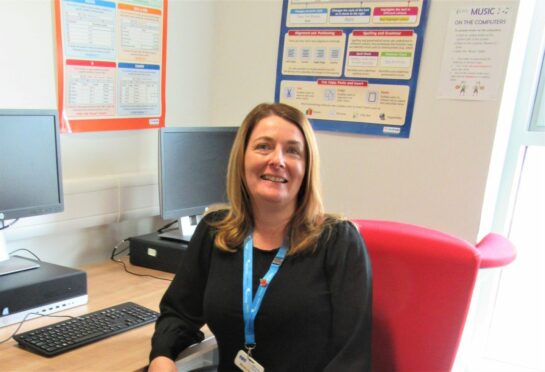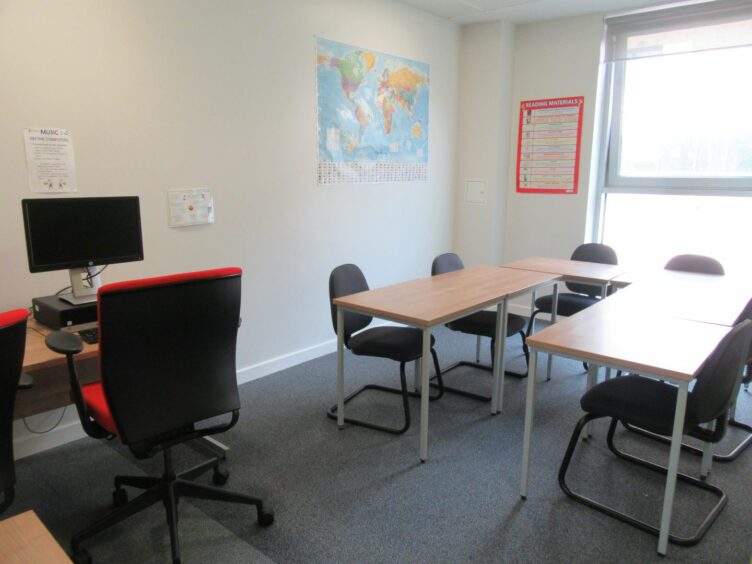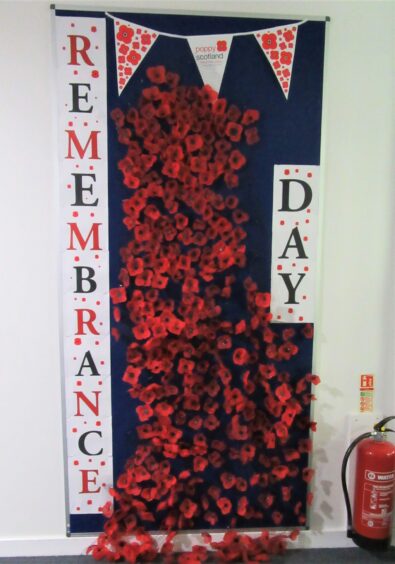It takes a special kind of person to become a teacher.
Patience, firmness and a sense of humour are all essential tools in a tough job, but some people take the challenge even further and extend their teaching to adult education – and prisons.
More than a decade ago, the Scottish government set out plans to boost education programmes in Scottish Prison Service (SPS) prisons, with research demonstrating that improved literacy levels help employment prospects and reduces the risk of re-offending.
Helping lead the way to improve education among prisoners is Wendy Harley, who heads up the Fife College Learning Centre team at HMP and Young Offenders’ Institute Grampian.
She has worked in prison education since 2009, at HMP Peterhead until 2013 before moving on to HMP Grampian where she delivers courses with a staff of tutors. For Wendy, working in prison education was a natural step in her teaching career.
“Prior to working in prison education I had worked in primary, secondary and further education,” she says. “I enjoy challenges and new experiences, and when the position arose I felt that it was a great opportunity to work in a unique environment with a wide range of age groups, backgrounds and academic abilities.”
Working closely with campus-based colleagues to ensure the team can deliver a broad range of options for prison learners, at the end of the day it all comes down to understanding learners’ needs, says Wendy.
Selling the benefits of education

“Many prisoners have had negative experiences of school and are apprehensive of attending any form of education,” she says. “Initial engagement and getting ‘buy-in’ is our biggest challenge.
“Plus, attendance at the learning centre is not mandatory. However, prisoners are encouraged to sign-up for classes during their initial education induction.”
Art provides a good opportunity for prisoners to express themselves
Aware that it is a tough hurdle to clear, the team sets about engaging directly with the prisoners and encouraging them to participate in learning in several ways.
“Our staff work throughout the establishment in work-shed areas and within the halls. Once prisoners begin to engage and see that they can actually learn something and enjoy doing it, they can attend the learning centre and progress with their education.”
And the secret lies in fine-tuning what they can offer learners. Wendy adds: “We need to tailor the curriculum to suit learners’ interests and keep it relevant and interesting to engage them.”
Subject choices vary widely, from SQA accredited courses to health and wellbeing, social sciences and even Open University (OU) courses, and other options are shaped by the college and the Scottish Prison Service.
“Discussions are held between Fife College and SPS to discuss delivery, plans and priorities for the coming year in an annual learning plan,” says Wendy. “The needs of our learners are extremely important and we aim to meet their goals.
“Prisoners can request classes or courses at any point throughout their sentence,” she adds. “We have a process in place which means referrals can be made by prisoners directly or through SPS officers or agency partners.”
Success stories
Class numbers vary in size, driven by factors shaped by learners’ needs and room sizes, but some subjects are consistently popular with inmates.
Wendy says: “Art, ICT and project-based learning are the most popular classes. Art, especially, provides a good opportunity for prisoners to express themselves.”
Across SPS Fife College learning centres, art success stories include 864 entries to the Koestler Arts awards by prison-based learners, with 330 awards across a number of categories.
Others included the creation of tote bags in partnership with NHS Scotland to raise awareness of mental health in prisons.
“Prisoners also enjoy ICT as some have never used computers before, and this can be an opportunity for them to learn or develop their ICT skills in the new world of technology,” says Wendy.
“Project-based learning also provides a variety of topics and learning through practical activities in a more relaxed environment,” she adds.
Helping families through learning
Projects have included the Remembrance Tree and display, which was created for Armistice Day and placed in the multi-faith area, and art projects that reflect knowledge, such as the solar system model.
Wendy understands all too well the challenges the team faces, but it’s the rewards that make it worthwhile, with some prisoners going on to achieve SQA qualifications, or go into further education upon leaving the prison.
“We’ve supported them to complete their college application and facilitated interviews, says Wendy. “One learner attended the employability class, completed the qualification and gained an SQA certificate. They created a CV, worked on their interview skills and went on to secure permanent employment.”
But the benefits of education also make their presence felt closer to home.
“A learner, a dad, attended the learning centre to improve his reading and writing skills,” Wendy recalls. “His skills improved so much, he was able to write a children’s story. The story was then read by the dad and recorded so the child could hear their dad’s voice at bedtime.
“During a following visit, the mum said the child’s face lights up every night and was sleeping much better.”
It’s moments like this that makes the job of educating inmates rewarding for Wendy.
“A ‘successful outcome’ comes in many shapes and forms,” she says. “It can range from someone learning to read and write to achieving an OU degree. But the most important factor is someone achieving their learning goals, no matter how big or small.
“I enjoy being able to see individuals progressing and making a difference to their lives, and I feel that this environment provides me with many opportunities to do so.
“Every day is different. I thoroughly enjoy all aspects of my job.”









Conversation